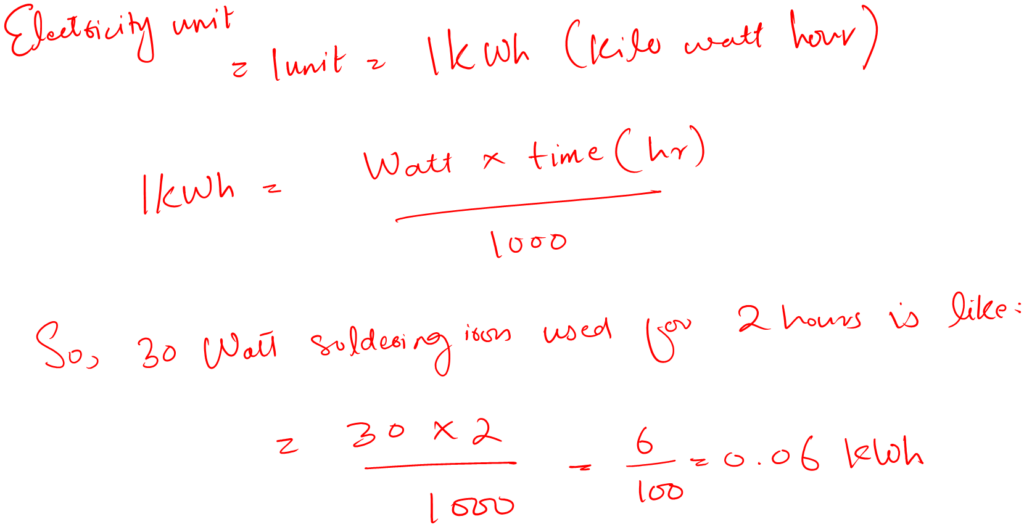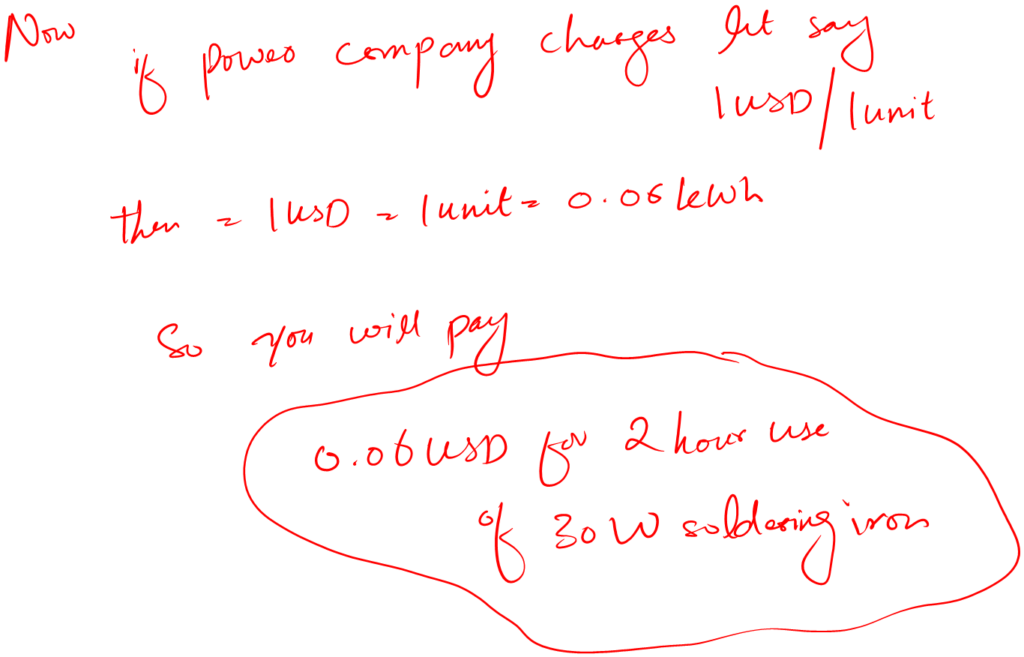Does soldering iron use a lot of electricity? (Answer, 2023)
Soldering iron uses electricity to operate. As many of us strive to be conscious of our energy consumption, it’s natural to wonder: does soldering iron use a lot of electricity?
No, compared to other household appliances soldering iron does not consume a lot of electricity. Various factors are involved in the power consumption of soldering iron such as its wattage, temperature setting, soldering tasks, thermal efficiency, and duration of use. Buying a soldering iron with appropriate wattage, keeping a required temperature setting, turning off the iron when not in use, and properly planning of soldering project can reduce electricity consumption.
In this article, let’s discuss the factors that influence a soldering iron’s power consumption and provide insights into its overall electricity usage.
Does soldering iron use a lot of electricity?
Electricity consumption depends upon some factors. We should know what are these factors. So let’s discuss.
Soldering iron
A soldering iron is a tool that is designed to transfer heat efficiently and melt down the solder so that it can flow into the joints and create a connection.
It has a heating element, a heated tip made of metal, and a well-insulted handle.

The heating of iron is often achieved through electricity. When the soldering iron is plugged into an electrical outlet, the heating element heats up, which then transfers to the tip, melting solder to flow.
The soldering operates on electricity, so people wonder if iron consumes a lot of electricity. Some factors contribute to the electricity consumption of soldering.
It’s important to know about these factors in detail. The factors are explained as follows:
1. Wattage and electricity calculations
In the selection of soldering iron, wattage plays a crucial role. Power consumption is also determined by wattage.
Wattage refers to the rate of energy consumed. For soldering iron wattage refers to how fast or quickly iron heat up and maintains its temperature. Soldering iron comes in a wattage range of as low as 15 watts and as high as over 100 watts.
Let’s see the electricity calculation for a soldering iron. For the following example, I am using 30W iron. But it doesn’t matter you can put your own value and will get your exact results.


The high-wattage soldering iron consumes more electricity compared to the lower-wattage. So more wattage means more electricity will be used by a soldering iron.
Soldering iron with low wattage is suitable for precise work or delicate tasks. For high-duty and large components soldering, a soldering iron with high wattage is recommended.
2. Temperature setting
Some soldering iron offers an adjustable temperature feature, which allows you to set the temperature according to your need. These types of irons accommodate a wide range of soldering tasks and materials.
When a high temperature is set on the soldering iron, it will need more energy to reach and sustain that temperature.
In this case, more electricity is consumed. On the other hand, if a low temperature is set, the energy needed to heat the iron is reduced. This lead to less electricity usage.
For precision work, such as delicate electronics soldering, lower temperatures are often sufficient. This not only conserves energy but also reduces the risk of damaging sensitive components due to excessive heat.
3. Duration of using a soldering iron
The duration of using the soldering iron also impacts the consumption of electricity. If you are working on your soldering project for a long time it will lead to more usage of electricity.
Soldering sessions are typically relatively short and intermittent, especially for hobbyists or casual users. As a result, even if a soldering iron has a moderate wattage, its overall energy consumption remains low.
4. Thermal efficiency
Thermal efficiency in soldering means how efficiently the iron converts electrical energy into heat for soldering purposes. If the soldering iron is thermal efficient it will reach to desire temperature with minimal energy losses.
Soldering iron doesn’t maintain its desired temperature and it will consume more electricity to reach its set temperature. A well-designed soldering iron with good insulation and heat transfer properties will use less electricity to achieve and maintain the desired temperature.
5. Soldering tasks
The soldering tasks also play a significant role in electricity consumption. Complex and lengthy projects or tasks can have a significant influence on electricity consumption.
The iron has to work at high temperatures for longer periods for larger and intact projects which will increase the energy usage.
How to minimize electricity usage
If you want to minimize the consumption of electricity while soldering, here are some necessary tips
1. Soldering iron with appropriate wattage
As we know wattage plays a very crucial role in electricity consumption. A soldering iron with high wattage consumes more energy or electricity than a soldering iron with low wattage.
Select the soldering iron with the appropriate wattage that is required for your tasks. Lower wattage for small projects and high-duty projects high-wattage soldering iron will be a good option.
2. Temperature setting
Temperature setting is very important in soldering. An improper temperature setting can damage the component if excess heat is applied to it and if you keep a high temperature on the soldering iron constantly it will consume more electricity to maintain the tip temperature.
Adjust the temperature according to the solder and material you’re working with. Unnecessary high temperatures will lead to overheating and high energy consumption.
3. Turning it off
There will be times when you’ll be not using the soldering iron, but it will be still on and will be consuming electricity.
You may be setting the components on the PCB or cutting its leads and iron will be at on state. When the soldering iron is not in use try to turn it off. Or buy a soldering iron with an Auto turn-off function like this one (Amazon link).
4. Planning
Planning is significant to minimize the soldering ironwork. Plan your soldering tasks to minimize rework. Efficient soldering techniques can lead to fewer touch-ups and less time spent with the iron powered on.
Conclusion
Soldering is an essential technique used by electronics and electrical engineers and many other people who have a bit of interest in DIY. As soldering iron used electricity to heat up and create a connection between metals.
A question arises in mind does soldering iron use a lot of electricity while heating up? The consumption of electricity in the case of soldering iron depends upon some factors such as the wattage of the iron, temperature setting, how much time the soldering iron is in the operating state, the soldering tasks, and thermal efficiency.
All these factors combined determine electricity consumption. The soldering iron used for small soldering projects like electronics soldering doesn’t consume a lot of energy as its wattage is less. The high-wattage soldering iron will consume more electricity.
Remember that select the iron with the appropriate wattage for your soldering task to minimize electricity consumption and free yourself from frustrating soldering.
Other useful posts:
